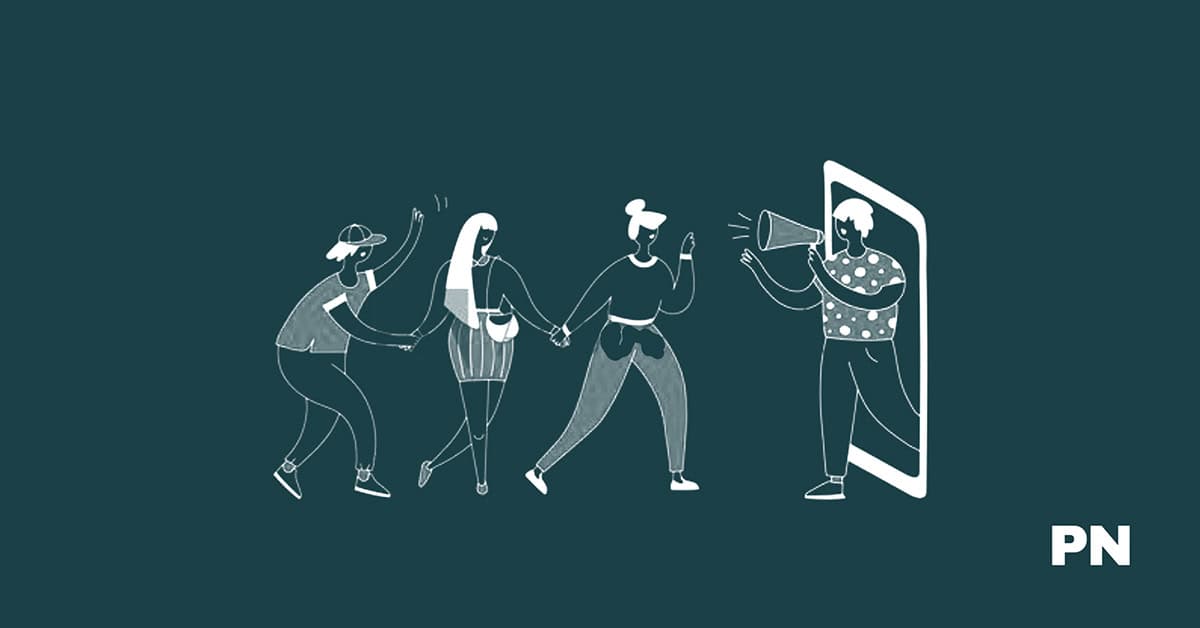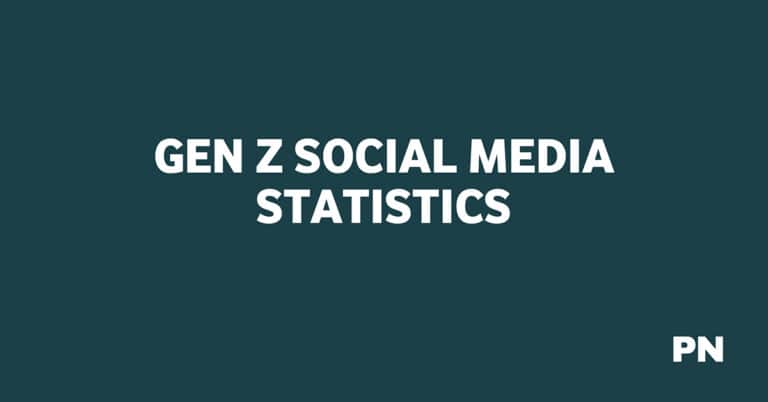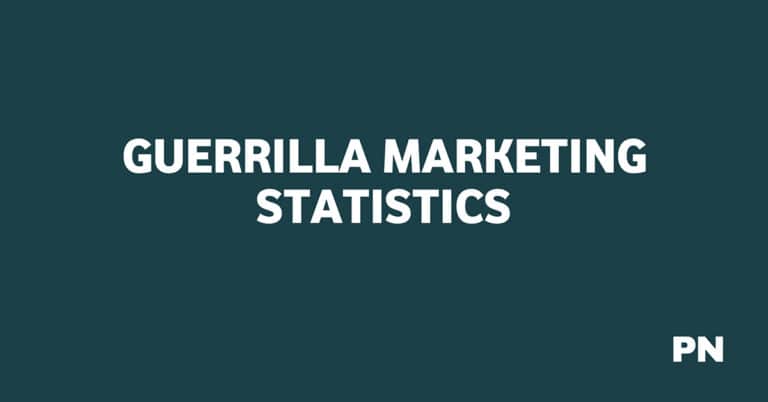41 Crazy Referral Marketing Statistics: Key Data & Trends

Referral marketing is a powerful tool for businesses looking to grow their customer base.
In fact, according to B2B vendors, referrals are the most effective marketing tactic.
But what exactly are referral marketing statistics, and how can they help your business?
Here’s a mind-blowing fact:
This is just one of the many statistics that demonstrate the effectiveness of referral marketing.
From generating higher conversion rates to increasing customer loyalty, referral marketing can transform your business.
So, if you want to boost your marketing strategy and grow your customer base, it’s time to examine referral marketing statistics.
From social media referrals to referral program CTAs, you can use various tactics to leverage the power of referrals and drive growth for your business.
1. Referrals are the most effective marketing tactic according to B2B vendors
(Source: TrustRadius)
According to a survey by TrustRadius, 49% of tech vendors consider customer referrals their top marketing tactic. This is followed by personalized messages (37%), online events (35%), and investing in SEO (31%).
Referral marketing is a cost-effective way to acquire new customers.
According to a study by the New York Times, 65% of new business comes from referrals. This is because referrals are more likely to convert into paying customers than other marketing tactics.
2. 71% of consumers are more likely to purchase based on social media referrals.
(Source: HubSpot)
Referral advertising on social media is a powerful tool for businesses to boost their sales.
One reason social media referrals are so effective is that people trust recommendations from their friends and family.
When someone sees a product or service recommended by someone they know and trust on social media, they are more likely to consider purchasing it. This is why social media referrals are a valuable marketing tool for businesses.
Another reason is that they are easy to share.
Social media platforms make it easy for people to share information about products and services with their friends and followers.
This means businesses can reach a wider audience through social media referrals than other marketing channels.
3. 52.2% of US small businesses say that referrals are their most successful marketing tool.
(Source: eMarketer)
Referral marketing works by leveraging the existing customer base to acquire new customers.
By encouraging satisfied customers to refer their friends and family, businesses can tap into a powerful source of new leads.
One reason why referrals are so effective is that they have a high conversion rate.
Referred customers are more likely to purchase customers acquired through other channels.
In fact, referred customers have a 37% higher probability of making another purchase, making them a valuable asset for businesses.
To take advantage of the power of referral marketing, you need to create a referral program that incentivizes customers to refer their friends and family.
This can be done through rewards such as discounts, free products, or exclusive event access.
By creating a strong referral program, you can tap into the power of word-of-mouth marketing and drive new customer acquisition.
4. 77% of referrals come from lead forms.
(Source: Score)
Lead forms are simple to use and can be easily integrated into your website or email marketing campaigns.
When customers fill out a lead form, they provide valuable information about a friend or family member who may be interested in your product or service.
This information can help you tailor your marketing efforts to reach potential customers more effectively.
Using lead forms as a referral method can also help you track the success of your referral program.
By monitoring the number of leads generated through your lead form, you can determine its effectiveness and make adjustments as needed.
In addition to lead forms, other popular referral methods include email referrals, social media referrals, verbal referrals, shareable URLs, and print cards.
However, lead forms remain the top referral method for businesses due to their ease of use and effectiveness.
5. 92% of consumers trust referrals from friends and family more than any other type of marketing.
(Source: Nielsen)
Referral marketing takes advantage of this fact by encouraging satisfied customers to refer their friends and family to a business.
By doing so, you can tap into the power of word-of-mouth marketing and acquire new customers more effectively.
However, referral marketing isn’t effective just because of the trust factor.
Referral customers also tend to be more loyal and valuable than customers acquired through other methods.
By leveraging the trust and influence of satisfied customers, you can create a virtuous cycle of referrals that drives growth and profitability.
6. Including a referral program CTA on the customer’s account page yields a 10% share rate and a 6% conversion rate, accounting for 36% of all referral money.
Adding a referral program CTA to your customer’s account page is an effective way to increase the success rate of your referral program.
Customers can easily share your product or service with their friends and family.
To maximize this strategy, it’s important to ensure that the referral program CTA is prominently displayed on the customer’s account page.
You can make it stand out by using bold colors and larger font sizes and placing it in a prominent location on the page.
7. Referral marketing generates 3-5X higher conversion rates than any other channel.
(Source: ReferralCandy)
For every 100 visitors referred to your website, you will likely get 3-5X more conversions than any other marketing channel.
One reason referral marketing is so effective is that it taps into the power of word-of-mouth marketing.
People are likelier to trust recommendations from friends and family than advertisements or other marketing messages.
By leveraging the power of your existing customers’ networks, you can reach new customers more likely to convert.
Another reason referral marketing is so effective is that it attracts high-quality leads.
Referred customers are more likely to be interested in and a good fit for your business.
This means you are more likely to see a higher ROI from your referral marketing efforts than from other marketing channels.
To maximize your referral marketing efforts, you need a well-designed referral program.
This program should make it easy for your customers to refer their friends and family and incentivize them.
8. The average small firm receives 60% of its revenue from referral campaigns.
(Source: Forbes)
Referral marketing is a powerful tool that can help small firms to grow their business. As a small business owner, you should consider implementing a referral program to increase sales.
Referral marketing is very cost-effective.
Unlike traditional advertising, which can be expensive, referral marketing relies on free word-of-mouth recommendations.
This means you can save money on your marketing budget while reaching a large audience.
9. The global referral marketing software market size was USD 226.9 million in 2019 and is predicted to reach USD 713.3 million by 2027 at a CAGR of 15.5%.
(Source: Globe Newswire)
The COVID-19 pandemic has also significantly contributed to the growth of the referral marketing software market.
As companies increasingly rely on word-of-mouth publicity of their products amid the pandemic, the market’s growth rate is expected to increase further.
Some of the key companies covered in the referral marketing software market include:
- Buyapowa
- Referral SaaSquatch
- InviteReferrals
- Extole
- Influitive
- Annex Cloud
- Tapfiliate
- Viral Loops Ltd
- ReferralCandy
These companies constantly innovate and introduce new features to their referral marketing software to provide better customer experience and increase customer engagement.
The referral marketing software market is expected to witness significant growth in the coming years due to various organizations’ increasing adoption of referral marketing strategies.
Referral marketing software can help organizations expand their customer base, increase customer engagement, and improve brand awareness.
As a result, it is becoming an essential tool for achieving their marketing goals.
10. Referred customers are 18% more loyal than customers gained through other sources.
(Source: Wharton Faculty Platform)
Loyalty is a critical factor in business success.
Loyal customers are more likely to make repeat purchases, spend more money, and recommend your business to others.
By implementing a referral marketing program, you can tap into the power of customer loyalty and increase your sales and profits.
For several reasons, referred customers are more loyal than those gained through other sources.
First, when a customer is referred to your business by someone they know and trust, they tend to have a positive attitude towards your brand.
They are more likely to believe your business can meet their needs and provide a positive experience.
Second, referred customers tend to better understand your business and its products or services.
They have received information about your business from someone they trust, which means they are more likely to have accurate expectations about what your business can offer.
11. Word-of-mouth can boost the effectiveness of marketing campaigns by 54%.
By leveraging the power of word-of-mouth marketing, you can tap into the influence of your existing customers and turn them into brand advocates.
This can help you reach new audiences and increase your customer base, all while building brand loyalty and trust.
One effective way to harness the power of word-of-mouth marketing is through referral programs.
Encourage your customers to spread the word about your products or services by incentivizing referrals.
Another way to boost the effectiveness of your marketing campaigns is by leveraging micro-influencers.
These are individuals with a smaller but highly engaged social media following who can help you reach a targeted audience with a message that resonates.
12. Customer referral programs can generate an average of 20,000 new emails every month.
(Source: Miller)
One of the most significant benefits of customer referral programs is their ability to generate many new leads.
A well-designed referral program can help you build a loyal customer base and generate new leads that can be converted into paying customers.
Customer referral programs can also help you build customer trust and credibility.
When your customers refer their friends and family to your business, they are essentially vouching for the quality of your products or services.
This can help you build a strong reputation and establish yourself as a trusted and reliable business in your industry.
13. Referred clients have a lifetime value that is 16% more than non-referred ones.
(Source: Jstor)
Referral marketing has been proven to increase customer loyalty, sales, and profits.
Referred clients have a higher lifetime value because they are often more engaged with your brand.
They are more likely to follow your social media accounts, sign up for your email list, and leave positive reviews.
This engagement can lead to increased sales and profits over time.
14. During the initial round of lockdowns, referrals increased by 425%.
(Source: The Drum)
When the COVID-19 pandemic hit, many businesses shifted their marketing strategies to adapt to the new normal. With in-person meetings out of the question, digital self-serve models became the norm.
Referral marketing has always been a powerful tool for businesses, but the pandemic has shown how effective it can be in driving growth and customer acquisition.
By leveraging the power of word-of-mouth, businesses were able to expand their customer base and reach new audiences, even in the midst of a global crisis.
As we move forward, it’s clear that referral marketing will continue to play a vital role in the success of businesses across all industries.
15. Only 22% of businesses utilize referral tools or solutions to expand their programs.
(Source: Williams)
Referral tools or solutions can help businesses create and manage referral programs more efficiently.
These tools can automate the referral process, track referrals, and reward customers who refer new businesses.
One reason businesses may not use referral tools or solutions is the lack of awareness.
Many businesses may not realize the benefits of referral marketing or the existence of referral tools.
It’s important for businesses to educate themselves on the potential benefits of referral marketing and the various tools available to them.
Another reason why businesses may not be using referral tools is the perceived cost.
However, many referral tools and solutions are affordable and offer a significant return on investment.
Businesses should consider the long-term benefits of referral marketing and the potential revenue growth achieved through a well-executed referral program.
16. Referral marketing offers a level of trust and credibility that other channels often lack.
Another advantage of referral marketing is that it can help you reach new customers that you may not have been able to reach through other channels.
When your existing customers refer your product or service to their friends and family, they act as brand ambassadors.
This can help you tap into new networks and reach new audiences that you may not have been able to reach through traditional marketing channels.
You can tap into this trust and credibility through the power of referrals.
17. Referral marketing software has shown significant growth potential during the COVID-19 crisis.
(Source: Fortune Business Insights)
As businesses try to adapt to the new normal, referral marketing has become an effective strategy for acquiring new customers and retaining existing ones.
The Globe Newswire report stated that the COVID-19 pandemic has accelerated the adoption of referral marketing software, as businesses try to find new ways to reach their target audience.
Referral marketing software allows businesses to leverage their existing customer base to acquire new customers.
By offering rewards and incentives to their loyal customers, businesses can encourage them to refer their friends and family.
During the COVID-19 crisis, referral marketing software became even more important as businesses tried to cut down on their marketing expenses.
Referral marketing is a cost-effective strategy that can help businesses acquire new customers without spending a lot of money on advertising.
18. Before COVID-19, only 3% of decision-makers from global e-commerce companies agreed that referral marketing is the most effective channel.
(Source: Fortune Business Insights)
As the COVID-19 outbreak hit, many businesses had to pivot their marketing strategies to adapt to the new normal.
This led to a significant increase in the use of customer referrals as a marketing tactic.
This increase in referral marketing use is not surprising, as it is a cost-effective way to acquire new customers.
By leveraging the power of word-of-mouth, businesses can tap into their existing customer base to drive new leads and sales.
Referral marketing also tends to have higher conversion rates compared to other marketing channels.
If you’re looking to boost your marketing efforts, referral marketing is a viable option.
19. Referrals from social media generated roughly 31% of new business.
(Source: Shareaholic)
It’s advisable to have a clear strategy in place to maximize social media referrals.
This can include creating engaging content, leveraging user-generated content, and incentivizing customers to refer their friends and family.
By doing so, you can increase the likelihood of your customers sharing your brand with their social networks.
One way to incentivize referrals is to offer rewards or discounts to both the referrer and the referred.
This encourages customers to refer their friends and family while also providing a positive experience for the referred.
To maximize the effectiveness of the rewards, it’s important to ensure that they are valuable and relevant to your customers.
20. Referred customers spend 200% more than the average client.
(Source: American Marketing Association)
Referred customers often increase their spending due to the quality of the product or service.
When someone recommends a business to their friends or family, they are likely to do so because they had a positive experience themselves.
This means that the business is providing a high-quality product or service, which can lead to increased customer satisfaction and spending.
21. Only 30% of companies in the United States have established formal referral programs despite their effectiveness.
(Source: Forbes)
Recent referral marketing statistics show that customer referrals remain a leading marketing strategy, underlining their importance in the business landscape.
Yet, many companies fail to take advantage of this opportunity to expand their customer base.
One reason for this may be that referral marketing can be challenging to implement effectively.
Companies need to create a referral program that incentivizes customers to refer their friends and family, while also ensuring that the referral process is seamless and straightforward.
If you’re one of the many companies that have yet to establish a formal referral program, now is the time to act.
With the right strategy and approach, referral marketing can be a highly effective way to grow your business and increase your bottom line.
22. Brands are a major topic of conversation, with people discussing them approximately 90 times per week.
For brands, all that conversation is good news.
According to research, 90% of people trust brands that their friends recommend.
This means that if your customers are talking about your brand with their friends, you’re more likely to earn their trust and their business.
So, how can you encourage your customers to talk about your brand?
One effective strategy is to offer a referral program.
In fact, 50% of referral programs reward promoters with dollars of credit, and the most common value of a dollar credit referral is $10 dollars.
This means that by offering a referral program with a valuable reward, you can incentivize your customers to spread the word about your brand.
It’s also important to remember that not all referral programs are created equal.
According to referral marketing statistics, 86% of referral programs do not use a tiered reward structure, while only 13% do.
This means that if you want to create a successful referral program, you may want to consider offering tiered rewards to encourage your customers to refer even more people.
23. 98% of consumers examine internet reviews before making decisions.
(Source: Power Reviews)
When it comes to making purchase decisions, customers rely heavily on the opinions of others.
As a business owner, it’s crucial to understand the power of online reviews and how they can impact your sales.
Positive reviews can lead to more customers and increased revenue, while negative reviews can have the opposite effect.
Therefore, it’s important to encourage satisfied customers to leave positive reviews and address any negative feedback in a timely and professional manner.
Referral marketing is another effective way to leverage the power of recommendations.
24. More than 50% of people are inclined to make a referral if offered a direct incentive, social recognition, or membership to an exclusive loyalty program.
This means that if you provide your customers with incentives, recognition, or exclusive access to your loyalty program, they are more likely to refer your business to their friends and family.
One way to incentivize referrals is to offer a discount or a free product to both the referrer and the referred customer.
This not only encourages the referrer to make the referral but also incentivizes the referred customer to make a purchase.
By offering a reward to both parties, you create a win-win situation that benefits everyone involved.
Another way to incentivize referrals is to offer social recognition.
This can be as simple as giving a shout-out on social media or featuring the referrer on your website.
By publicly recognizing and thanking your referrers, you show your appreciation and encourage others to make referrals.
Finally, offering exclusive access to your loyalty program can also incentivize referrals.
Providing your customers with exclusive benefits, such as early access to sales or special discounts, creates a sense of exclusivity and encourages them to refer others to your business.
25. Referrals generate 25% better profit margins than non-referred consumers.
(Source: American Marketing Association)
Referral marketing has been proven to be an effective way to attract new customers and retain existing ones.
The financial influence of referrals on organizations is significant.
Referrals generate 25% better profit margins than non-referred consumers.
This is because referred customers are more likely to make a purchase and spend more money than non-referred customers.
They also tend to be more loyal, which means they are more likely to return to the business in the future.
26. Two big UK-based pre-paid telecoms businesses currently acquire 25-35% of all new customers through referral programs.
(Source: Buyapowa)
So how do these companies make their referral programs work?
One key factor is the incentive they offer to their customers.
Typically, customers are rewarded for each referral they make, either with a discount on their own bill or with some other type of reward.
Another important factor is the ease with which customers can make referrals.
These companies have made it simple for their customers to refer their friends and family through their website or mobile app.
If you’re considering implementing a referral program for your business, keep these factors in mind.
Make sure you offer a compelling incentive to your customers, and make it as easy as possible for them to make referrals.
27. Referrals have a 30% conversion rate, making them quite useful for boosting sales.
(Source: Forbes)
Referrals have a much higher conversion rate than other marketing channels, such as paid advertising or email marketing.
This is because referrals are based on trust and personal relationships, which are two important factors that influence purchasing decisions.
To make the most of referrals, it’s essential to have a well-designed referral program in place.
This program should offer incentives to customers who refer others to your business, such as discounts, free products, or other rewards.
Another critical aspect of a successful referral program is tracking and measuring its effectiveness.
By tracking the number of referrals generated and the resulting sales, you can determine the ROI of your referral program and make adjustments as needed.
28. Referral marketing generates an average of 16% more profit than other channels.
(Source: Wharton School of Business)
When someone recommends your business to their friends or family, it carries more weight than any advertisement you could create.
People trust the opinions of those they know, and they are more likely to make a purchase based on a recommendation from someone they trust.
This includes identifying your target audience, creating incentives for referrals, and tracking your results.
If your customers are happy with the products or services you provide, they are more likely to recommend you to others.
29. Referral programs can lead to a 69% faster time to close deals.
(Source: Forbes)
When you implement a referral program, you are essentially leveraging the power of your existing customers to bring in new business.
Referral marketing statistics show that word-of-mouth recommendation plays some part in 80% of all B2B and B2C deals.
If you can get your customers to refer their friends and family to your business, you can tap into a powerful source of new leads and sales.
In addition to the faster close time on sales, referral programs can lead to higher conversion rates and increased customer lifetime value.
Companies with referral programs enjoy higher conversion rates (71%), faster deal closures (69%), and increased customer lifetime value (59%) compared to those without such programs.
30. Referral marketing accounts for approximately 11% of all e-commerce sales.
Referral marketing leverages the power of word-of-mouth marketing.
When a satisfied customer recommends your product or service to a friend or family member, they are essentially vouching for your brand.
This can be a highly effective way to build trust and credibility with potential customers, which can ultimately lead to more sales.
Referral marketing can be a cost-effective way to acquire new customers.
Traditional advertising and marketing campaigns can be expensive.
But with a referral program, you only pay for the new customers actually acquired through the program. This stretches your marketing budget and gives you more bang for your buck.
31. Referred customers have a 37% higher retention rate than non-referred customers.
(Source: Invesp)
Referred customers are more likely to trust your business and feel confident in their decision to purchase.
Another reason for the higher retention rate is the relationship between the customer and the referrer.
When customers are referred to a business by someone they know and trust, they are likelier to feel a sense of connection to that business.
This connection can lead to a stronger relationship between the customer and the business, which in turn leads to higher retention rates.
32. The average referral rate stands at 2.35%.
(Source: ReferralCandy)
For every 100 customers you have, you can expect 2-3 to refer new business to you.
However, the referral rate can vary depending on several factors, including your industry, the type of product or service you offer, and the demographics of your customer base.
For example, some industries may see higher referral rates than others, while referral rates may be lower for niche products or services.
Despite these variations, the average referral rate of 2.35% is a valuable benchmark to keep in mind as you build and optimize your referral marketing program.
By tracking your referral rate over time, you can assess the effectiveness of your program and identify areas for improvement.
33. Referrals drive over $5 billion in annual revenue for companies worldwide.
Referral marketing is so effective because it relies on the power of social proof.
People are more likely to trust the recommendation of a friend or family member than a traditional advertisement.
This is why referral marketing campaigns often include incentives for both the referrer and the referee, as this can encourage people to spread the word about a brand or product.
Another reason why referral marketing is so effective is that it can help businesses to acquire high-quality customers.
People referred to a business by a friend or family member are likelier to become loyal customers than those who discover a business through other means.
This is because they already have a level of trust in the business based on the recommendation of someone they know and trust.
34. 65% of consumers say receiving rewards impacts their purchase frequency.
(Source: Rain)
But what kind of rewards should you offer?
According to the statistics, discounts are a popular choice, with 79% of people saying their primary reason for ‘liking’ a company’s Facebook page is to get discounts.
However, rewards can come in many forms, from free shipping to early access to sales and new products.
Rewards don’t just impact purchase frequency – they can also affect how much customers spend.
64% of consumers say that rewards impact how much they spend. Offering attractive rewards can encourage your customers to make larger purchases.
35. 69% of consumers say they’re more likely to try a brand if it rewards them.
Businesses can offer various rewards to customers for referring their friends and family.
These rewards can range from discounts to free products or even cash.
By offering a reward, businesses not only incentivize customers to refer their friends but also show appreciation for their loyalty.
This can help build a positive relationship with customers and encourage them to continue doing business with the company.
Moreover, offering rewards can also increase the chances of customers sharing their positive experiences with their network.
88% of US shoppers would like a reward for sharing a product on social media or via email, and the same goes for 95% of 18-year-olds.
This indicates that customers are more likely to share their experiences with their network if they receive a reward.
Rewards can encourage customers to share their positive experiences with their network, increasing brand awareness and customer loyalty.
36. 40% of company hires come from employee referrals.
(Source: Forbes)
One of the reasons why employee referrals are so effective is that they can help companies find high-quality candidates.
Referrals often come from trusted sources, such as current employees or industry contacts. Hence, candidates are likelier to have the right skills and experience for the job.
Another benefit of employee referrals is that they can help companies save time and money.
Referral candidates tend to move through the recruitment process faster than other candidates so that companies can fill open positions more quickly.
Additionally, companies can save money on recruitment costs by relying on employee referrals instead of more expensive recruitment methods.
To maximize employee referrals, companies should have a straightforward referral program in place.
This program should outline the process for submitting referrals and any incentives employees may receive for successful referrals.
Conclusion on Referral Marketing Statistics
Referral marketing is a powerful tool that can help businesses acquire new customers at a lower cost and with higher retention rates.
The statistics show that referral marketing is a strategy that should not be overlooked by businesses that want to grow their customer base.
The top business referral methods are lead forms, email, word of mouth, social media, and shareable URLs.
When implementing a referral marketing program, it is essential to make it easy for customers to refer their friends and family.
This can be done by providing shareable links, social media buttons, and referral forms on your website.
Disclosure: We may earn commissions if you buy via links on our website. Commissions don’t affect our opinions or evaluations. We’re also an independent affiliate of many platforms, including ClickFunnels, Kartra, GoHighLevel, Podia, Northwest Registered Agent, and others. We’re not employees of these services. We receive referral payments from them, and the opinions expressed here are our own and are not official statements of these companies.





